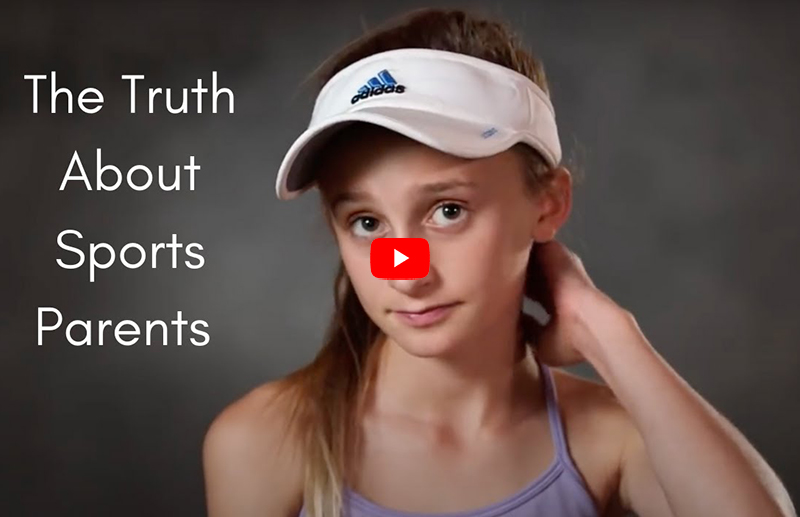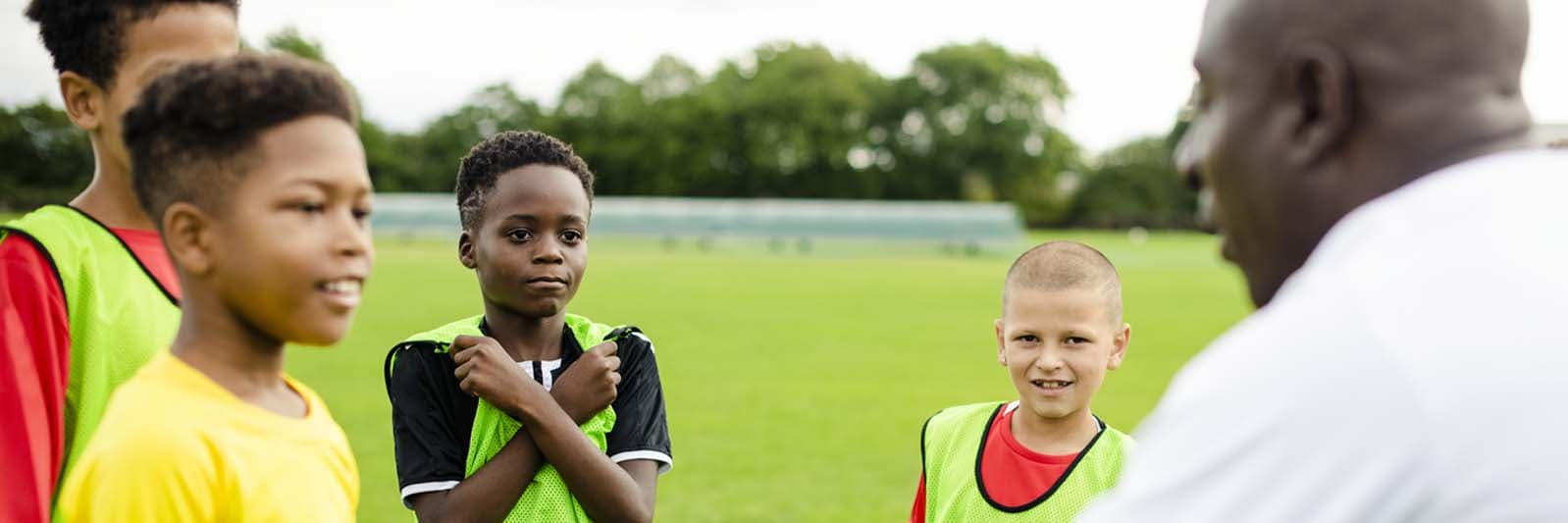
If Your Kid Plays Multiple Sports At The Same Time, Do These Six Things
Multi-sport has become Simultaneous-Sport
If your kid plays multiple sports at the same time, do these six things. The term multi-sport athlete gets thrown around A LOT these days. But unfortunately, its meaning has changed. Multi-sport used to mean an athlete would play various sports when they were in season, but seasons no longer exist in youth sports for most of us anyway. The multi-sport athlete has given way to the simultaneous sport athlete. We should note this isn’t recommended by Ilovetowatchyouplay.com, doctors, pediatricians, or athletic trainers. It often can lead to injury and burnout. But because it’s become so widespread, there is a need to understand the best practices for youth sports parents to manage this new trend and educate your child and yourself to keep your athlete as healthy and safe as possible.
We enlisted the help of the National Athletic Trainers’ Association (NATA) and their public awareness campaign, At Your Own Risk, to devise a list of best practices if your child plays multiple sports at the same time
*We know it can be challenging to incorporate all of these into already hectic schedules, but as parents, we must sometimes make the tough decisions to do what’s best for our kids.*
6 Things All Multi-Simultaneous-Sport Athletes Should Be Doing
1. Get 8+ hours of rest per night. If your athlete is playing simultaneous sports, sleep is one of the first things to go, and it’s one of the MOST important things they need to be doing. The juggling act of balancing school and one sport is hard enough, but when you add in a second sport, often the child will go straight from school to afternoon practice and then directly to evening practice. This can mean homework, dinner, and downtime are getting squeezed into a very abbreviated night; when an athlete should be going to bed, they are just starting their homework. Sleep is all about repair, both mental and physical. The quality and the amount of sleep, to a great extent, determine the effectiveness of recovery. The majority of muscle repair and growth occurs during sleep when hormones are released. When an athlete doesn’t get enough sleep, they are more prone to injury and illness. This will prove detrimental to any young person, particularly athletes, as they are already asking more from their bodies and minds. And the lack of sleep won’t just affect their health, but also their performance. It’s been scientifically proven to lower reaction time, accuracy, and sprint times. Whereas adequate sleep (8+ hours) results in fewer mental errors and extended playing careers.
2. Incorporate active recovery & foam rolling techniques each day. “Foam Rolling,” or the more technical term, Self-Myofascial release, is a fancy term for self-massage. This simple action, when done correctly, can release muscle tightness, ease muscle soreness, correct imbalances, increase range of motion, and assist in the prevention of injury. It is important to recognize that not all stretching is created equal, and recovery tools like a foam roller CAN be effective when used correctly. An athletic trainer will provide you with the proper indications and techniques and correct your form to optimize your results: An athlete should never foam roll on “cold muscles.” It is important to have an active warm-up combined with foam rolling and stretching. Decide which foam roller is right for the job. They range in size, density, and price. Have a backup foam roller in the car and encourage your athlete to roll out in between their activities, following the guidelines they have been given.
3. Stay hydrated. Hydration is foundational in that everything else an athlete does during training, competition, and recovery is at least somewhat dependent upon their fluid intake. A good rule of thumb for athletes is to divide their body weight in half and drink at least an ounce per pound of body weight throughout a typical day (e.g., someone weighing 160 pounds should drink 80 ounces of water a day).
- Before Exercise: Drink 16 ounces of water two hours before the physical activity begins and another 8-16 ounces right after exercising.
- During Exercise: Every 15-20 minutes, drink at least 4-6 ounces of fluid during vigorous exercise. For less vigorous exercise, decrease the amount slightly.
- After Exercise: Drink 16-24 ounces of water for every pound lost during physical activity. Consuming rehydrating beverages (like fruit smoothies) and eating watery foods (such as fruits and vegetables) along with salty ones can help replace lost fluids and electrolytes.
A simpler way for most athletes (or anyone) to drink enough water is to remember the Rule of 8: Eight times throughout the day, drink a big glass of water (eight total)
4. Take two days completely off each week – for ALL sports. Their bodies need this time to heal and repair to maintain a hectic school schedule and multiple sports. When you exercise, tiny tears form in the muscles that will eventually help the muscle grow bigger and stronger as it heals. The recovery time is when the body adapts to the stress that was placed on it during exercise. This is when the real effects of training take place – not when the athlete is exercising. Biologically, your body is the only thing that heals your body! And then there’s the mental side – playing simultaneous sports is not just physically wearing down athletes. It’s also mentally exhausting them. Imagine going from a full day of school of having to be ‘on’ attentive and actively listening, social pressures, and mental pressures, then right to an organized sport, where again, they are expected to not only perform physically, but they need to be mentally sharp with varied drills and game scenarios they are mastering, then add in another practice on top of that! It’s no wonder so many kids are burning out both mentally and physically. Giving a young athlete two days off sports a week is ideal, but one should be mandatory for any multi-athlete. Rest and relaxation will go a long way in trying to maintain such an active lifestyle. Read more about rest and recovery for youth athletes.
5. Eating food that promotes recovery and gives an athlete fuel. The saying, “You are what you eat,” 100% pertains to simultaneous athletes. If they don’t put proper nutrition into their bodies, they will break down eventually. An analogy we like to share with an athlete is to think of their body as a car. If you fill-up the tank with the wrong fuel, you ruin your car! Also, what happens if you forget to put gas in the tank and keep driving? Your car dies. Your car can’t run on empty, and neither can your body. For the simultaneous athlete, fueling the body can be hard to accomplish as they often run from practice to practice. But with a little planning ahead, you can avoid the fast-food/Starbucks drive-through and instead have snacks ready in between that will actually help your athlete heal, recover, and energize. Here is a comprehensive list of recommended foods for athletes to maintain and expect a high level of output from their bodies. Youth sports parents, we hope this helps to keep it easy and simple, but there are plenty of other great options if you are interested in learning more. Five Athlete Super Foods
Pita and hummus.
Rice crackers and peanut butter.
Whole grain toast and almond butter.
Cereal and skim milk.
Greek yogurt, berries, and granola.
Protein shake and banana.
Multi-grain bread
Sweet potatoes
Chocolate milk
Quinoa
Fruits (pineapple, berries, banana, kiwi)
Rice cakes
Rice
Oatmeal
Potatoes
Pasta
Dark, leafy green vegetables
Avocado
Tuna
Salmon
Cottage cheese
6. Teach them to Listen to their body and mind. Parents need to check in with their child consistently, ask questions, and pay attention to all the subtle and not-so-subtle subtle-clues. Because even if they aren’t saying it, you will know when they need a break. This could be mental or physical exhaustion or burnout. They might not be comfortable asking for time off, but that’s when you need to do your job as a parent and step in. It might seem at the time to be a big deal to miss a week or two or even more of practice and games. But in the big scheme of life, I promise you that this will not make or break their sports careers. But it could make or break their bodies and minds. Talk to them about what burnout feels like and looks like, and encourage them always to let someone know how they are feeling: parents, athletic trainers, coaches, or all of the above. Then, we need to respect this and make sure they get the time off they need. Otherwise, you might find your child another statistic in the 70% of kids who quit sports by age 13.
Created in conjunction with the National Athletic Trainers’ Association (NATA) and At Your Own Risk
More Articles You Might Enjoy From Ilovetowatchyouplay.com:
My Daugther Quit Sports, This Is What All Youth Sports Parents Need To Know
The Damaging Effect Of Overparenting Our Athletes
A Father’s Ode To His Son’s Final Game












